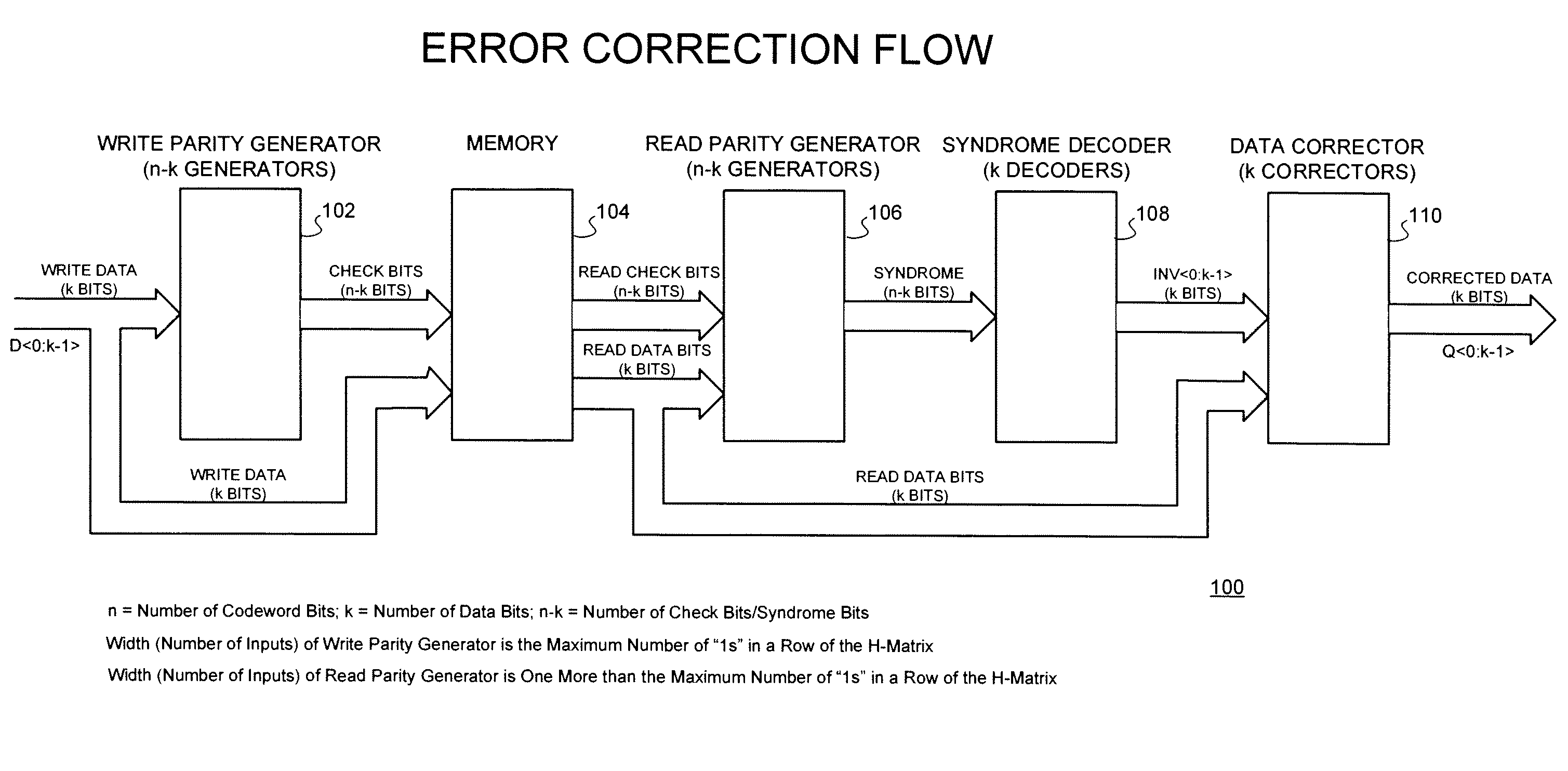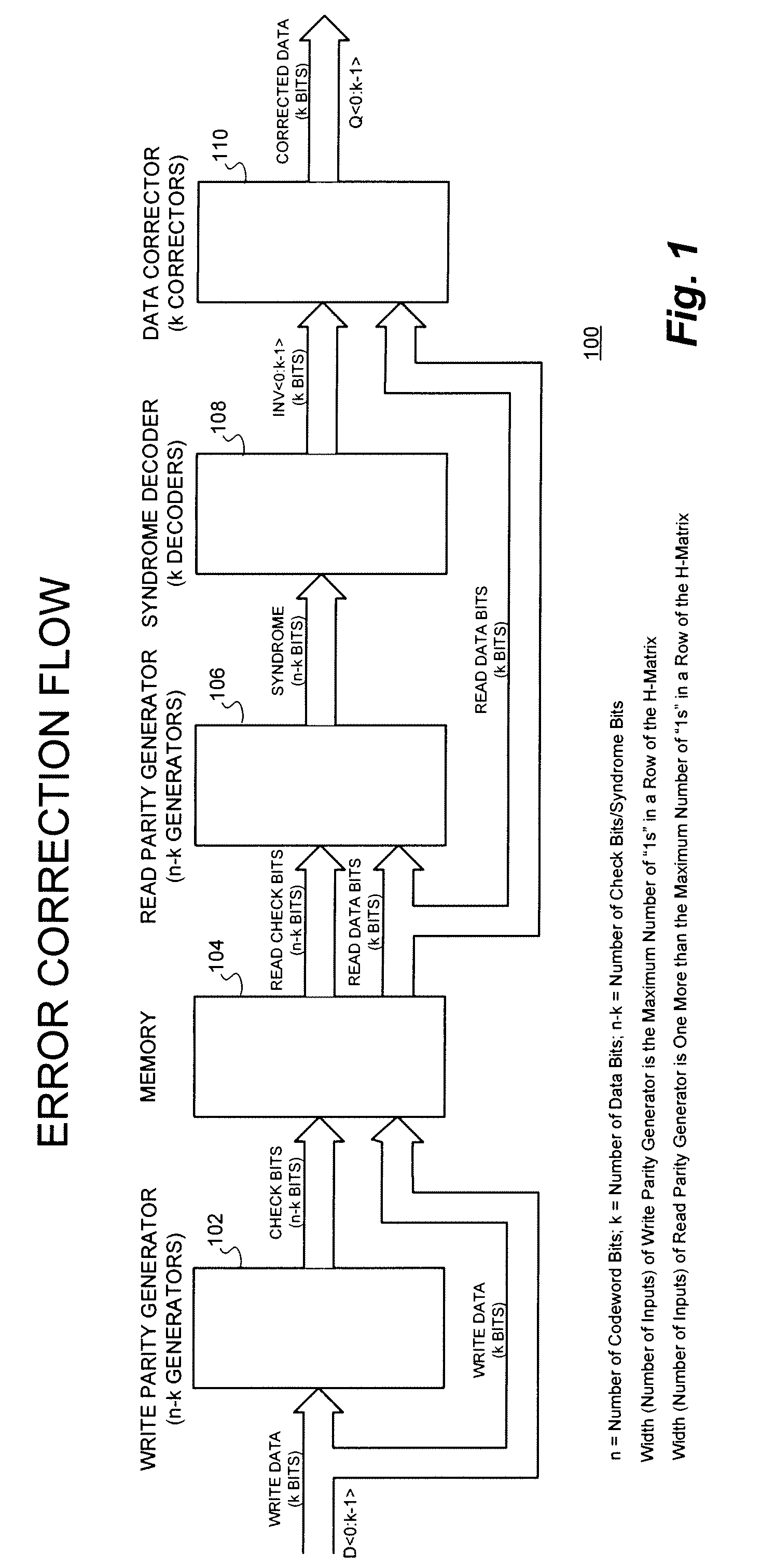Technique for reducing parity bit-widths for check bit and syndrome generation for data blocks through the use of additional check bits to increase the number of minimum weighted codes in the hamming code h-matrix
a technology of parity bit width and data block, which is applied in the field of data storage and data communication, can solve the problems of increasing the difficulty of recognizing double bit detection, and no one has disclosed the technique of using “excessive” or extra check bit redundancy, so as to increase the number of data bits and reduce the number of minimum weight codes
- Summary
- Abstract
- Description
- Claims
- Application Information
AI Technical Summary
Benefits of technology
Problems solved by technology
Method used
Image
Examples
Embodiment Construction
[0031]With reference now to FIG. 1, a representative SEC / SED error correction flow implementation 100 of the technique of the present invention is shown. The implementation 100 receives a number of write data bits (k bits) on a data bus of width D. These data bits are received by a write parity generator 102 comprising n−k number of generators as shown.
[0032]The write parity generator 102 then supplies a number of check bits (n−k) to a memory 104 which is also coupled to the data bus D for receiving the write data also supplied to the write parity generator 102. The memory 104, in turn, supplies a number of read check bits (n−k bits) and read data bits (k bits) to a read parity generator 106 comprising n−k number of generators as well. The read parity generator 106 provides a syndrome (n−k bits) to a syndrome decoder 108 comprising k decoders.
[0033]The syndrome decoder 108 provides k bits of invert data signal on an INV bus to a data corrector block 110 comprising k correctors. The ...
PUM
 Login to View More
Login to View More Abstract
Description
Claims
Application Information
 Login to View More
Login to View More - R&D
- Intellectual Property
- Life Sciences
- Materials
- Tech Scout
- Unparalleled Data Quality
- Higher Quality Content
- 60% Fewer Hallucinations
Browse by: Latest US Patents, China's latest patents, Technical Efficacy Thesaurus, Application Domain, Technology Topic, Popular Technical Reports.
© 2025 PatSnap. All rights reserved.Legal|Privacy policy|Modern Slavery Act Transparency Statement|Sitemap|About US| Contact US: help@patsnap.com



